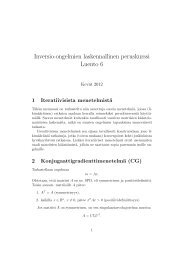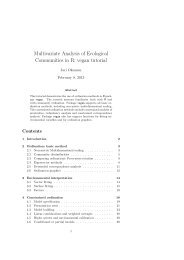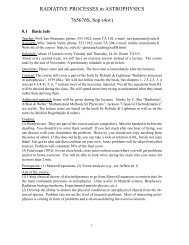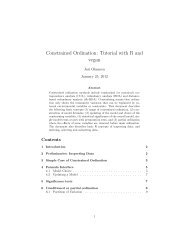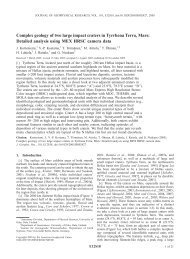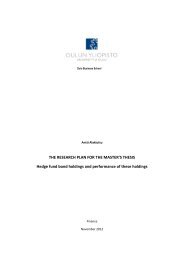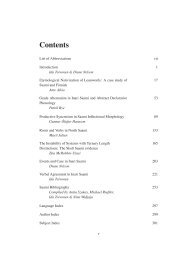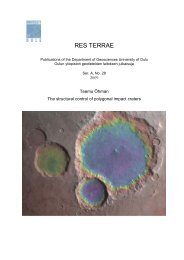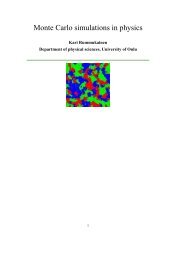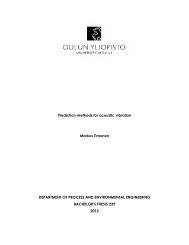Juha Köykkä - Oulu
Juha Köykkä - Oulu
Juha Köykkä - Oulu
- TAGS
- juha
- oulu
- cc.oulu.fi
You also want an ePaper? Increase the reach of your titles
YUMPU automatically turns print PDFs into web optimized ePapers that Google loves.
Res Terrae, Ser. A 32, J. <strong>Köykkä</strong>, Sedimentology of the Mesoproterozoic Telemark basin-fills, South Norway: implications for<br />
sedimentation processes, depositional environments and tectonic evolution<br />
Paper V<br />
Paper V describes and interprets the fracture zone and basal breccias that are asso-<br />
ciated with the sub-Svinsaga unconformity (Fig. 4). The study focuses on the mount<br />
Svafjell and Brattefjell areas, and the work was mainly carried out in 2005 (Fig. 3).<br />
The sub-Svinsaga unconformity is the most significant regional unconformity within<br />
the Telemark supracrustal rocks, and it separates the package into the Vestfjorddalen<br />
Supergroup and an overlying succession of early Sveconorwegian units. The isotopic<br />
datings show that a depositional hiatus of at least 170 Ma is associated with this un-<br />
conformity. The unconformities and associated deposits record valuable information<br />
about the paleoclimate and paleosedimentology, and this information is the main con-<br />
tribution of the Paper V. Paper V proves that the origin of the sub-Svinsaga unconfor-<br />
mity is probably associated with periglacial cold-climate processes and environments.<br />
Paleoweathering can provide valuable information about the formation of different<br />
rocks units and the paleoclimatic conditions during their deposition. Thus, frost wea-<br />
thering is a fundamental geomorphic process operating in periglacial environments.<br />
Periglacial refers to the non-glacial processes, conditions, and landforms associated<br />
with cold-climates. In general, descriptions of Mesoproterozoic deposits ascribed to a<br />
periglacial cold-climate are rare. This rarity is possibly due to the deposits of that age<br />
being affected by diverse tectonic and metamorphic processes and, later, weathering<br />
and erosion. This can make the recognition of any typical periglacial cold-climate in-<br />
dicators, like sand wedges, frost-shattered blocks, or frost fractures, difficult or even<br />
impossible. However, it is probable that ancient periglacial and glacial deposits were<br />
produced by similar processes to those operating and observed in the Phanerozoic rock<br />
record (e.g., Eriksson et al., 1998, 2004). Thus, the recognition of cold-climate perig-<br />
lacial features from Precambrian deposits should be based on an assemblage of indica-<br />
tors and detailed lithofacies analyses.<br />
Paper V concludes that the irregular features of the fractures, fracture patterns, mi-<br />
crofractures, shattered quartz arenite clasts, and mudstone fills indicate that periglacial<br />
alteration processes played an important role in the genesis of the fracture system as-<br />
sociated with the sub-Svinsaga unconformity. The characteristics of the fracture zone<br />
indicate rapid freezing and volumetric expansion. The role of frost shattering is also<br />
supported by the fracture zone passing upward to the in situ breccia zone and then to a<br />
57



